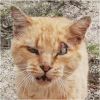Life expectancy of cats in Britain: moggies and mollies live longer
- PMID: 39897493
- PMCID: PMC11787799
- DOI: 10.7717/peerj.18869
Life expectancy of cats in Britain: moggies and mollies live longer
Abstract
The domestic cat (Felis catus) has been a popular companion animal for about 12,000 years, initially valued for rodent control before evolving into pets that provide affection and companionship. Unlike dogs, cats were not selectively bred for specific roles until the late 1800s, resulting in breeds defined primarily by appearance, which sometimes leads to genetic disorders. Modern animal welfare concerns emphasize longevity and health, prompting research into factors affecting cat lifespans, including sex, reproductive status, and breed. This study aims to expand on previous UK research by analyzing these interactions and highlighting the potential negative impacts of pure breeding on cat health. Data from 7,708 cats receiving veterinary care in the UK during 2019 were analyzed, focusing on reproductive status, breeding status, age at death, and sex. Data were analyzed using ANOVA and Cox proportional hazards models to assess survival differences. The overall mean lifespan of cats in the UK is 11.83 years. Analysis indicates that male cats live shorter lives than females, attributed to higher trauma rates and health issues among males. Neutered/spayed cats generally exhibit longer lifespans compared to entire cats. Tom cats have the shortest lifespan, while spayed females (mollies) live the longest. Moggies tend to outlive both pure and cross-bred cats, suggesting that genetic diversity may contribute to greater longevity. The results of this study emphasize the influence of sex, reproductive status, and cat type on feline lifespan, highlighting the need for targeted health interventions, particularly for male cats. The findings underscore the complex interplay of genetic and environmental factors in determining the health and longevity of domestic cats. This research not only contributes to existing knowledge but also advocates for the consideration of these variables in future studies and veterinary practices.
Keywords: Cat; Cross-bred; Gender; Life expectancy; Moggy; Molly; Neutering; Pure breed; Spaying; Survival analysis.
© 2025 Mata.
Conflict of interest statement
Fernando Mata is an Academic Editor for PeerJ.
Figures






Similar articles
-
Life tables of annual life expectancy and risk factors for mortality in cats in the UK.J Feline Med Surg. 2024 May;26(5):1098612X241234556. doi: 10.1177/1098612X241234556. J Feline Med Surg. 2024. PMID: 38714312 Free PMC article.
-
Life expectancy and survival analysis for companion dogs and cats in Seoul, South Korea.Front Vet Sci. 2025 Apr 30;12:1532422. doi: 10.3389/fvets.2025.1532422. eCollection 2025. Front Vet Sci. 2025. PMID: 40370825 Free PMC article.
-
Longevity and mortality in cats: A single institution necropsy study of 3108 cases (1989-2019).PLoS One. 2022 Dec 29;17(12):e0278199. doi: 10.1371/journal.pone.0278199. eCollection 2022. PLoS One. 2022. PMID: 36580443 Free PMC article.
-
Reproduction of Domestic Cats in Laboratories, Catteries, and Feral Colonies: A Review.Top Companion Anim Med. 2023 Jul-Aug;55:100780. doi: 10.1016/j.tcam.2023.100780. Epub 2023 May 22. Top Companion Anim Med. 2023. PMID: 37225041 Review.
-
Folliculogenesis in the domestic cat (Felis catus).Theriogenology. 2006 Jul 1;66(1):5-13. doi: 10.1016/j.theriogenology.2006.03.019. Epub 2006 Apr 18. Theriogenology. 2006. PMID: 16620931 Review.
Cited by
-
Cavy lifespan: survival analysis and lifetables for the pet guinea pig (Cavia porcellus, L.) in Britain.PeerJ. 2025 Jul 18;13:e19702. doi: 10.7717/peerj.19702. eCollection 2025. PeerJ. 2025. PMID: 40692850 Free PMC article.
-
Cat brains age like humans: Translating Time shows pet cats live to be natural models for human aging.bioRxiv [Preprint]. 2025 Aug 1:2025.07.31.667772. doi: 10.1101/2025.07.31.667772. bioRxiv. 2025. PMID: 40766475 Free PMC article. Preprint.
References
-
- Albright JD, Calder C, Learn A. Introduction to cat behavior. In: DiGangi BA, Cussen VA, Reid PJ, Collins KA, editors. Animal Behavior for Shelter Veterinarians and Staff. 2nd Edition. Hoboken, NJ, USA: John Willey & Sons; 2022. pp. 30–52. - DOI
-
- Amiot C, Bastian B, Martens P. People and companion animals: it takes two to tango. BioScience. 2016;66(7):552–560. doi: 10.1093/biosci/biw051. - DOI
MeSH terms
Associated data
LinkOut - more resources
Full Text Sources
Miscellaneous

